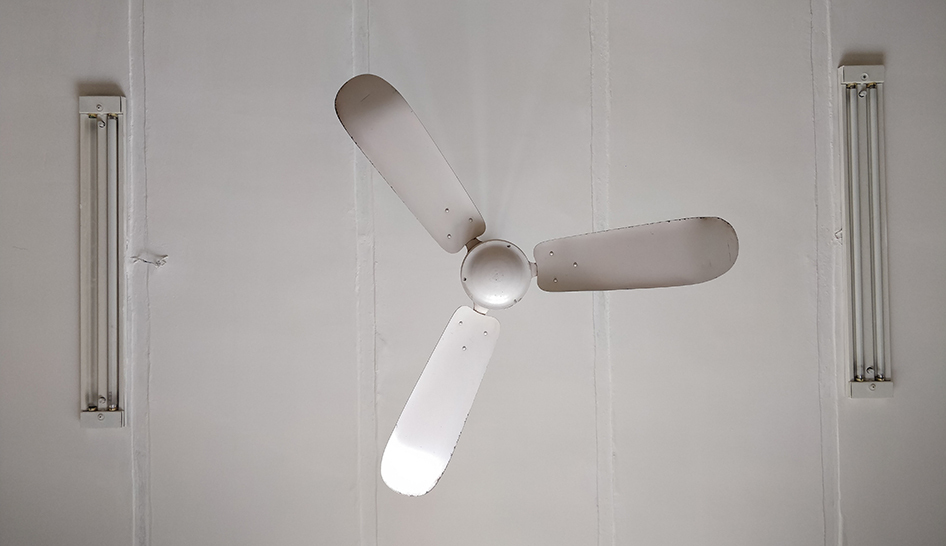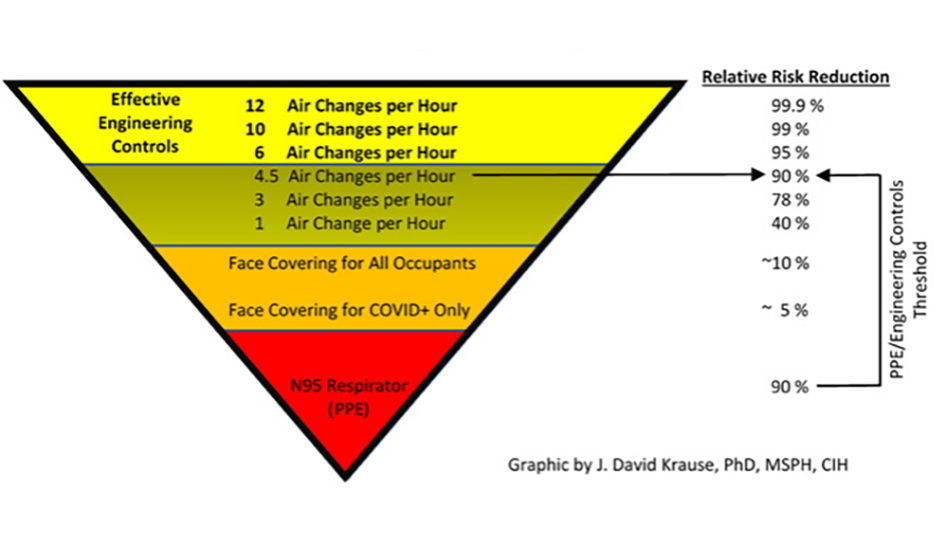Preparation and Testing Methods
Ahead of the initial study, the club’s entire HVAC system was thoroughly cleaned by an outside cleaning company, and the filters were replaced with MERV-13 filters, which according to ASHRAE (the American Society of Heating, Refrigerating, and Air Conditioning Engineers) are 85% efficient at capturing airborne viruses. The HVAC upgrade and cleaning took place the week of August 10-17, followed by air sampling from August 18-24. Samples were taken one, three, and seven days following the installation of new MERV filters.
Air and Filter Sampling
Researchers from TRC Environmental Corporation collected samples from both the air inside the fitness center and the HVAC filter media, and tested those samples for SARS-CoV-2 genetic material. Both the air and swab samples were analyzed by reverse transcriptase polymerase chain reaction (RT-PCR) technology to detect SARS-CoV-2 residuals.
During the air quality assessment, four samples were taken on three separate days throughout a Planet Fitness location in Toledo, OH. Three samples from various areas of the club were collected from devices situated on a tripod in the “breathing zone” or space located between three and six feet off the floor and more than two feet from the walls or air conditioning units. This zone is the area monitored during an industrial hygiene survey to aid in determining the presence of airborne contaminants, and roughly simulates where people would likely be standing or moving. The fourth sample was collected from an air sampler attached to a Planet Fitness employee as they went through a normal workday. This air sampling device was located between 6 and 9 inches surrounding the nose and mouth for personal monitoring of airborne particulates.
Samples were also collected from the club’s HVAC MERV filters media according to procedures outlined by researchers at the University of Oregon.
Subsequent testing was conducted at locations across Michigan and Ohio between December 2020 and February 2021. This process includes four tests per location, two in the HVAC rooftop units (RTU), one on a high-touch surface, and one collecting ambient gym air, capturing a sample for a six to eight hour time period across standard high traffic areas in the facilities. Once all clubs are tested, PFMG plans to retest clubs every six months.
Existing Safety Protocols
Clubs undergoing subsequent testing are operating with a number of COVID-19 safety protocols in place, including:
- Physical distancing of six feet or greater, with capacity limited to 25% in Michigan and 50% in Ohio.
- Floor markings to reinforce social distancing possible, increased space between machines, and touchless check-in via the mobile app.
- Hand and respiratory hygiene, with hand-washing and cough and sneeze etiquette emphasized for members and staff.
- Staff are required to wear a mask at all times, except when eating or taking a break away from the club floor, and members are required to wear a mask at all times in Michigan, and anytime they are not on a piece of equipment in Ohio.
- Enhanced cleaning and sanitation, with increased cleaning frequency and members wiping down machines before and after use. Staff rotate through the club for monitoring every 20 minutes, and use an electrostatic sprayer to disinfect the club with Environmental Protection Agency (EPA) approved chemicals on a daily basis.
- Contact tracing facilitated by member check in software, with the capacity to provide confidential contact tracing data to public health authorities in the event of an exposure.
Facility HVAC systems operated at normal capacity during the initial study: air was recirculated four times per hour, with 22% coming from outdoor air. This equated to the air completely turning over once every 68 minutes. Following the initial study in Toledo, air filters at PFMG’s other clubs were upgraded to MERV-13 and dampers were opened to maximum capacity. With this configuration, air is completely turned over every 45 minutes with an air exchange rate approaching six per hour.
Findings
The researchers found no detectable SARS-CoV-2 virus in the air or in the HVAC filter media on any of the sampling occasions across the clubs tested. During the month of January, these clubs saw on average 584 daily check-ins.
These findings are especially relevant given the tests were conducted in December and January, when community spread of COVID-19 was peaking. Previously available data had been collected during times of lower community spread in the summer and fall. In addition, the COVID-19 variant B.1.1.7., known as the “U.K. variant” has been identified in both Ohio and Michigan around the time some of this testing took place.
Since the study conducted in Toledo, the club has improved upon existing infrastructure and filtration by installing MERV-13 filters in all locations and opening dampers to achieve 33% fresh air circulation which effectively increases the Clean Air Delivery Rate (CADR). Based on these facts and using Figure 2 in the American Industrial Hygiene Association report “Reducing the Risk of COVID-19 Transmission Using Engineering Controls,” PFMG estimates a 90% reduction in the risk of COVID-19 in their facilities.


